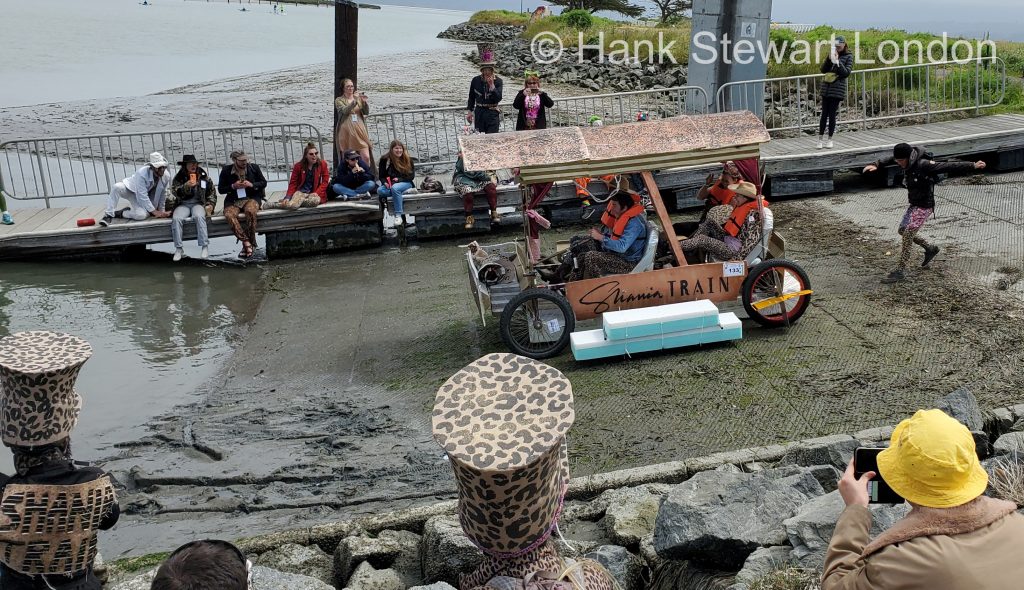
The previous post, Is It Art? was about the creative process and its importance in our lives. Although I wasn’t originally planning to, I decided to carry the discussion a bit further, in part inspired by an article in my favorite business magazine, “Entrepreneur” (link at the end) that I received after that post, and an event I recently attended.
This time, we’re talking about the Makers in our midst. Whether inspired by the Steampunk movement, Rube Goldberg, a bunch of weird dreams, the need to solve a problem that they didn’t know existed, or to find a solution to an issue because necessity is the mother of invention, the Maker movement is loud and proud!
In many competitive instances – but not all – creatives are tasked with building or creating according to a finite set of rules and criteria, some of which are strict, while others are not. These might include rules that each piece must be able to travel a particular distance on land and/or water; be made of recycled materials, be completely hand-made, be kinetic, conforming to size specifications; and so on.
Some of the more obvious demonstrations of this would include:
- Parade floats, particularly the more elaborate designs with mechanical moving parts on the platform.
- Maker Faire events around the country where creatives get to show off their ingenuity in a variety of disciplines.
- Robotic competitions where mechanized contestants fueled by modern computer technology battle for supremacy.
- The Kinetic Grand Championship, a movable art feast where all entrants are manually pedal powered, and tasked with surviving both a land and water course.
- Burning Man and all its sibling events worldwide, where Makers lead the masses.
- Dragon Boat races where oar power drives artfully crafted vessels with dragon heads, tails and other adornments.
- Art Cars where vehicles of all sizes and styles are covered with a diverse array of materials, emblems, paintings and more.
The origins of each of these events is similar in that they all started on a small scale, with a few local participants who needed an outlet for their passions and creativity. Some built things for their own amusement, while others had something in their heads that they could no longer contain and wanted to show the world.
Whether the creations look professional or amateurish is less an issue when the primary judgements are originality, creativity and functionality. Sure, those with the best skills with tools and materials – whatever they are – will turn out the sleekest, shiniest, “objects.” But, funky and rough oftentimes win too!
Recently, I had the opportunity to be in the town of Arcata, California to attend the Kinetic Grand Championship. The event has been taking place there since 1969! (Event link at the end of this piece.) Arcata has a lot of artistic touches around town, so it almost seems like the perfect place for this kind of event.
Being a university town (Cal Poly Humbolt and other schools), I expected the participants to be predominantly college kids, and was pleasantly surprised that was not the case; instead witnessing broad chronological diversity. While most of the spectators were from the general vicinity, it was evident many participants and onlookers traveled far to be part of the action. A few of the participants were solo, but most seem to have had entourages of 15-20 people in support roles, many actively involved to keep things moving forward.
Here are a few images from the event.
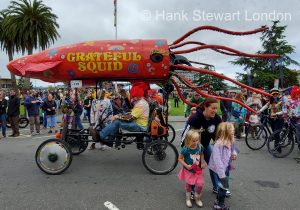
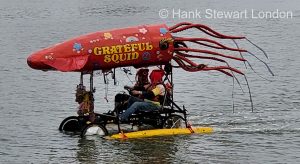

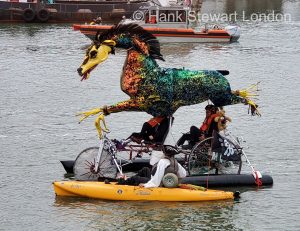
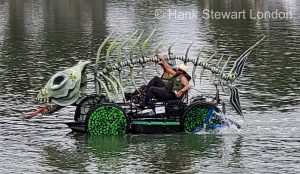
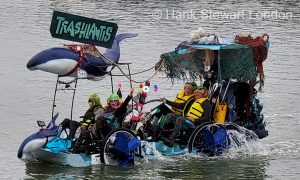
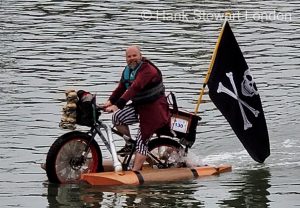
But what does all this have to do with your career and job search?
Glad you asked!
Among the many attributes that Artists and Makers can potentially list on their professional profiles and resumes are statements that convey their ability to create, to come up with original ideas or expand on others’ ideas and bring them to iteration and completion; problem solving abilities; leadership; teamwork; and the specific manual and technological skills used to achieve the desired completed work. These include, but are not limited to skills in woodworking, metal-working, fabricating, assembly, manual and CAD drawing, budgeting, painting, marketing and promotion.
Depending on the position one is applying for, these kinds of attributes can be particularly attractive. Employers want staff who are diverse, see things from multiple angles, and have a wealth of skills beyond those that are typically expected, demonstrating a more rounded and experienced employee. Unfortunately, many job seekers don’t think about or recognize the relevance of their leisure activities to the paid work they want to do. If they did, they might be surprised by the overlap of their relevant skills.
As many job descriptions include the caveat, “other duties as assigned”, these kinds of creative skills can improve an employer’s perception of the value one can bring to their company. If you have the skills and are active in events such as described, don’t keep it to yourself. Speak out in describing your participation, your teamwork, your creative efforts and their successes. You don’t have to come in first to be a winner. But you will need to determine: Will It Float?
# #
Here’s the link to the article from the May, 2023 issue of #Entrepreneur:
https://www.entrepreneur.com/leadership/what-jobs-are-right-for-creative-people-its-leadership/449222
And here’s the link to the Kinetic Grand Championship
https://kineticgrandchampionship.com/
# # #
